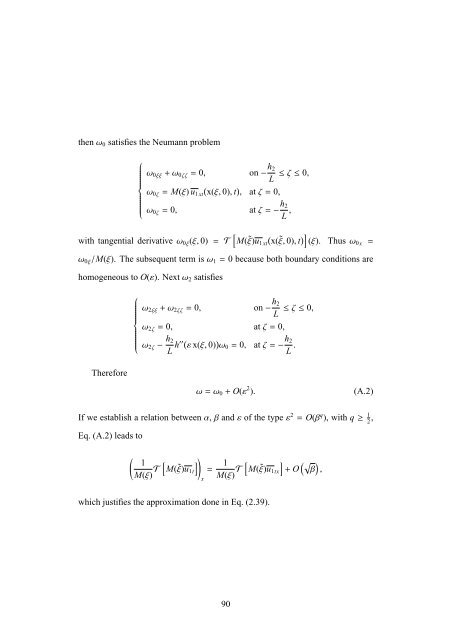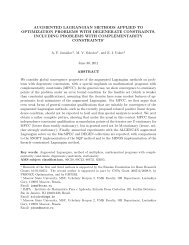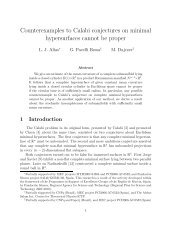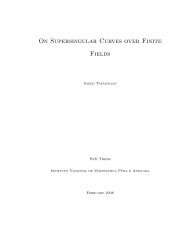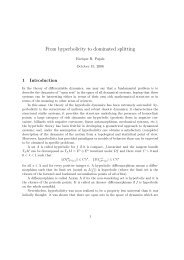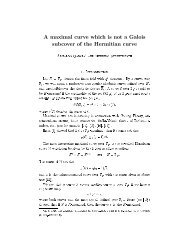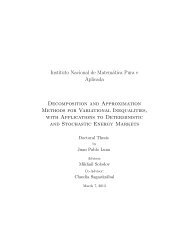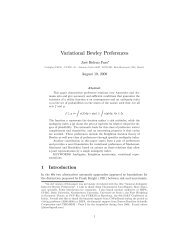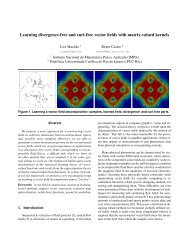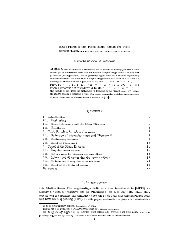a reduced model for internal waves interacting with submarine ...
a reduced model for internal waves interacting with submarine ...
a reduced model for internal waves interacting with submarine ...
Create successful ePaper yourself
Turn your PDF publications into a flip-book with our unique Google optimized e-Paper software.
thenω 0 satisfies the Neumann problem<br />
⎧<br />
⎪⎨<br />
⎪⎩<br />
ω 0ξξ +ω 0ζζ = 0, on− h 2<br />
≤ζ≤ 0,<br />
L<br />
( )<br />
ω 0ζ = M(ξ) u 1xt x(ξ, 0), t , atζ= 0,<br />
ω 0ζ = 0, atζ=− h 2<br />
L ,<br />
<strong>with</strong> tangential derivativeω 0ξ (ξ, 0) = T [ M(˜ξ)u 1xt<br />
( x(˜ξ, 0), t ) ]<br />
(ξ). Thusω0x =<br />
ω 0ξ /M(ξ). The subsequent term isω 1 = 0 because both boundary conditions are<br />
homogeneous to O(ε). Nextω 2 satisfies<br />
⎧<br />
⎪⎨<br />
⎪⎩<br />
ω 2ξξ +ω 2ζζ = 0, on− h 2<br />
≤ζ≤ 0,<br />
L<br />
ω 2ζ = 0, atζ= 0,<br />
ω 2ζ − h 2<br />
L h′′( ε x(ξ, 0) ) ω 0 = 0, atζ=− h 2<br />
L .<br />
There<strong>for</strong>e<br />
ω=ω 0 + O(ε 2 ).<br />
(A.2)<br />
If we establish a relation betweenα,βandεof the typeε 2 = O(β q ), <strong>with</strong> q≥ 1 2 ,<br />
Eq. (A.2) leads to<br />
(<br />
1<br />
M(ξ) T[ ] )<br />
M(˜ξ)u 1t = 1<br />
x<br />
M(ξ) T[ ] (√ )<br />
M(˜ξ)u 1tx + O β ,<br />
which justifies the approximation done in Eq. (2.39).<br />
90


